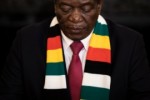In An Era of Big Money, the University of Illinois Shrugs Off Rules on Athletes’ NIL Deals
by Stacy St. Clair, Chicago Tribune, and Jodi S. Cohen, ProPublica
ProPublica is a nonprofit newsroom that investigates abuses of power. Sign up for Dispatches, a newsletter that spotlights wrongdoing around the country, to receive our stories in your inbox every week.
Amid a standout season last year, University of Illinois men’s basketball stars found themselves in high demand as they reached the Elite Eight in the 2024 NCAA Tournament.
Three players appeared in a commercial for a local BMW dealership.
One did an Instagram post for TurboTax.
Another promoted an apartment complex near the Urbana-Champaign campus.
But not one of those endorsements — which are allowed now that student-athletes can profit from their personal brands — was reported to the university, as state law requires.
In fact, the entire Illini team reported just $9,100 in name, image and likeness deals during the 2023-24 season, according to records obtained by the Chicago Tribune and ProPublica. By comparison, the average earnings reported for a male basketball player in the Big Ten and the three other biggest college conferences were more than $145,000 during that school year, according to data that institutions voluntarily provided to the NCAA.
The Illini basketball team’s missing disclosures reflect an indifference to documenting NIL deals across the athletic department, the news organizations found. Athletes from 20 sports combined have reported earning only about $1.2 million in three-plus years, compared with the $20 million Ohio State University’s football team reportedly received in a single year, or a University of Missouri quarterback who alone is estimated to have made more than $1 million in NIL deals.
By shrugging its shoulders at Illinois’ reporting requirements, the university is failing to compile a complete picture of how its students — some of them still teenagers — are navigating a relatively new terrain rife with legal, moral and financial pitfalls.
“I find that maddening and irresponsible,” said Bill Carter, founder of Student-Athlete Insights, which provides NIL consulting services. “It seems unethical to me to allow 18-to-23-year-olds to participate in something life-altering like this but provide no structure, no support, no direction.”
A University of Illinois cheerleader rallies fans at the start of a women’s basketball game in February. The lead sponsor of the state’s law on college athletes’ name, image and likeness deals said one goal of the mandatory reporting provision was to examine potential gender gaps in compensation. (John J. Kim/Chicago Tribune)Officials from the Department of Intercollegiate Athletics say they inform the school’s athletes of their responsibilities but acknowledge they do not enforce compliance, despite the Illinois law requiring athletes to disclose all deals to their schools. The officials downplayed those failures by asserting that reporting is spotty nationwide.
Athletes “should just disclose the deals, but both here and across the country, they just kind of don’t really do that,” Kamron Cox, a U of I assistant athletic director and the school’s NIL specialist, said in an interview.
In a three-page response to questions, the athletic department acknowledged students are underreporting their earnings and did not dispute any of the figures in this story. The statement noted it is students’ responsibility to report NIL agreements and said the university has fulfilled its obligations under the law by paying for an app that allows athletes to do so. It called the state’s disclosure rules — which the university had advocated for — “ineffective,” noting the law carries no penalties and arguing that punishing players internally would harm the institution’s reputation.
“Our program, like most across the country, is doing its best to navigate in uncharted waters,” the statement said. It contended that 70% of NIL deals nationwide go unreported, citing one industry insider whose estimates have varied. “Blind adherence to an untenable process does not appear to be the expectation of the state, the NCAA, or our industry.”
Administrators also said they do not know how much money Illini basketball players — or any of the student-athletes — are receiving through NIL, even though today’s collegiate marketplace requires understanding the amounts needed to recruit and retain star athletes.
That lack of knowledge “is not possible and it’s not believable,” Carter said.
More than 20 states, including Illinois, passed laws requiring athletes to disclose their deals after the U.S. Supreme Court ruled four years ago that collegiate competitors have the right to make money. ProPublica and the Tribune obtained records of the deals reported by U of I athletes from July 2021 through October 2024 via the Freedom of Information Act, offering the public a rare look at the lack of accountability in the big-money world of college sports.
Michael LeRoy, a University of Illinois professor who has studied name, image and likeness deals in collegiate athletics, said he wonders why the Illinois athletic department hasn’t done more to ensure compliance with NIL reporting requirements. (John J. Kim/Chicago Tribune)The records the U of I provided to the Tribune and ProPublica included 1,037 deals across all sports with the names of the athletes redacted by agreement. Sponsored social media posts were, by far, the most frequent way athletes reported earning money, followed by autograph signings and personal appearances.
In this far-from-complete data, deals ranged from a male basketball player’s $326,000 arrangement with a Porsche dealership in Kentucky to $10 for a track athlete to endorse a men’s soap called “Freshticles.”
The Illinois law on NIL requires athletes to provide their schools with copies of contracts when the deals are........






















 Toi Staff
Toi Staff Tarik Cyril Amar
Tarik Cyril Amar Jeffrey Bernstein Ph.d
Jeffrey Bernstein Ph.d Gideon Levy
Gideon Levy Andrew Mitrovica
Andrew Mitrovica Penny S. Tee
Penny S. Tee Sharona Margolin Halickman
Sharona Margolin Halickman Tafi Mhaka
Tafi Mhaka Jennifer Gerlach Lcsw
Jennifer Gerlach Lcsw Maximilian Hess
Maximilian Hess
